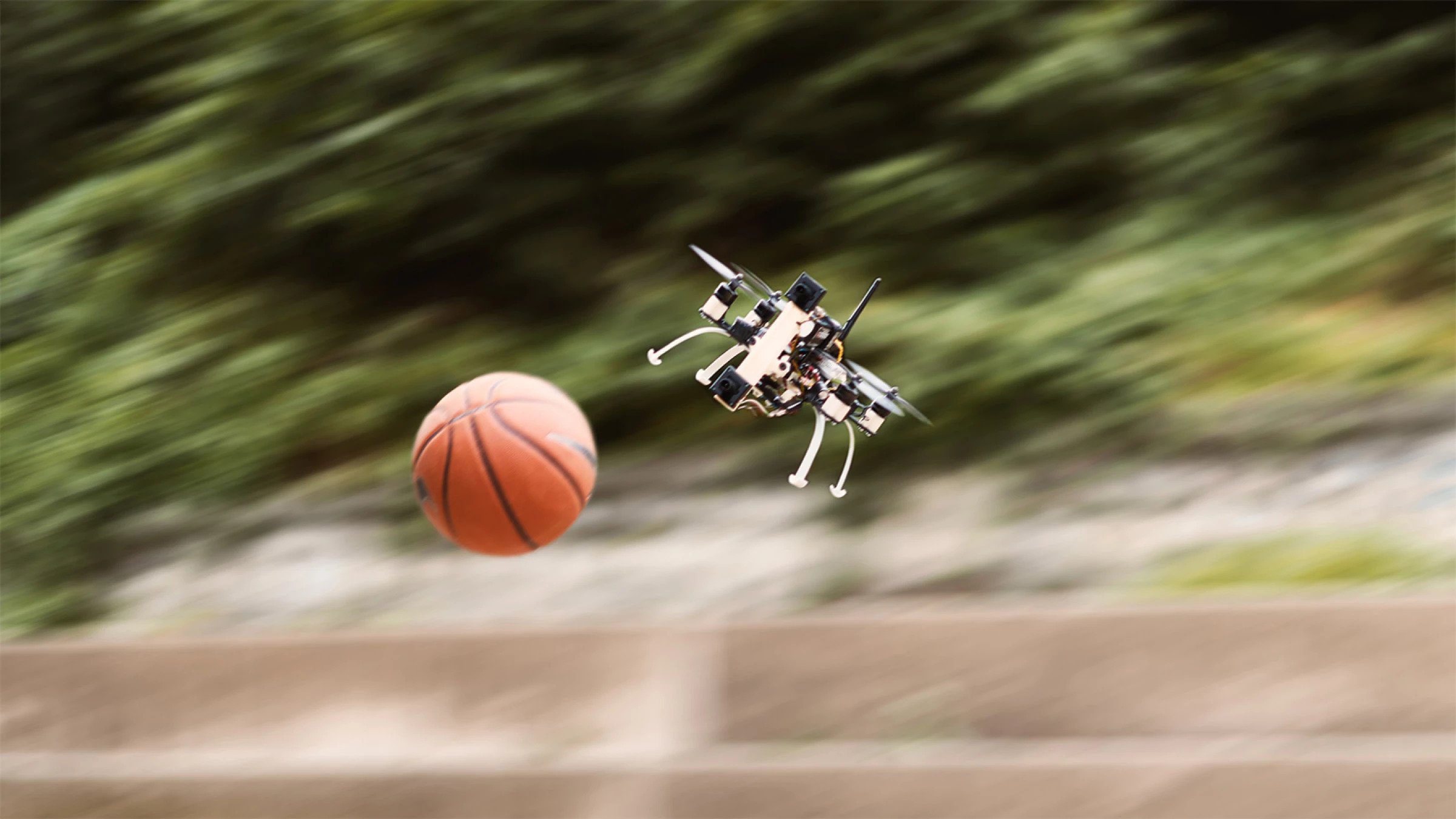
Drones have come a long way since their first iteration, which was unsteerable and lifted a mere two feet off the ground during its first flight, was unveiled by French inventor brothers Jacques and Louis Bréguet in 1907. Modern-day quadcopters can be programmed to fly autonomously at high altitudes for long distances, swim underwater, and now, thanks to some University of Zurich researchers, even play dodgeball!
However, before you start envisioning a man vs. machine dodgeball tournament, the prototype, unveiled in the journal Science Robotics on March 18, 2020, is designed to help commercial delivery drones avoid obstacles, especially when flying at high speeds. Currently, it takes quadcopters, which use cameras as detection aids, 20 to 40 milliseconds to process the image and react to the obstacle. Though that is incredibly fast, it is not quick enough to safely avoid objects, such as a bird or another drone, which may suddenly appear in the machine's flight path.

The University of Zurich team, led by PhD student Davide Falanga, began by fitting a drone with event cameras. Unlike regular cameras, which constantly capture the entire scene and hence take longer to process it, event cameras only send the drone information when a movement, usually determined by light intensity, is detected. Though the simple switch helped cut the processing and reaction time immensely, event cameras are a recent invention and not ready for use in drones. To bypass the issue, the roboticists developed custom algorithms that captured the pixel reactions in the drone's line of sight and corrected the machine's flight path so that the obstacle could be avoided.
To test the algorithms' effectiveness, Falanga and his colleagues tossed various objects at the enhanced event cameras. They found that depending on the object's size and the distance from where it was thrown, the movement was accurately detected between 81 and 97 percent of the time. More importantly, it took the system just 3.5 milliseconds to detect objects and react.

The researchers then repeated the test, but this time with the cameras fitted on a flying drone. To their delight, they found that the drone dodged objects — including a ball thrown from 9.8 ft (3 m) away that was traveling at 32.8 ft (10 m) per second — 90 percent of the time. When the size of the obstacles to be avoided was programmed, only one camera was required to detect the movement. However, when the dimensions of the objects were unknown, the drone needed both cameras to avoid impact.
Though still in early stages, the technology could help resolve one of the biggest hurdles facing companies like Amazon and UPS, who have been envisioning using drones to make deliveries for many years. Faster reaction times could also help save lives. Falanga says, "Currently, in all search and rescue applications where drones are involved, the human is actually in control. If we could have autonomous drones navigate as reliably as human pilots, we would then be able to use them for missions that fall beyond the line of sight or beyond the reach of the remote control."
Resources: newatlas.com, www.therobotreport.com
